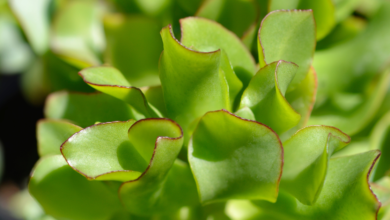We tend to water our plants to continue to enable them to grow faster.
But the roots of a new purple passion plant are fragile, making them prone to root rot when you overwater them, thereby destroying the whole plant as a result of wet feet.
In the same vein, the green leaves of the purple passion plant start to sag when it doesn’t get enough water and may become root bound to the pot.
However, you will need a balanced watering schedule when growing purple passion plant. New purple passion plants need to receive the right amount of water.
Note that this watering method will be largely dependent on the size of the purple velvet plant in order to avoid root rot, and also the amount of light it gets.
The easiest hands-off approach is to have a self-watering planter or pot. We highly recommend this self-watering pot as it’s so easy to use. Add water and that’s it. No-fuss no muss.

What is the Best Temperature for a Purple Passion Plant?
Just like other indoor plants, the purple passion plant will thrive under normal room temperature, as it doesn’t tolerate much heat.
Temperatures between 60F and 80F (15C to 26C) is ideal for the propagation of the purple passion plant.
What Humidity Levels Does a Purple Passion Plant Thrive In?
The purple passion plant enjoys relatively moderate to high humidity.
If you happen to have low humidity, you can place your plant on a tray containing water and rocks. This can help create moisture in the air around your plant.
Alternatively, an electric humidifier could help raise the humidity.
Common Problems When Caring for a Purple Passion Plant
Just like other houseplants, the purple passion plant can fall victim to common pests like mealy bugs, spider mites, aphids, whiteflies, and scale.
Pests to Look Out for
Pests like the spider mite are troublesome. They can go undetected on your purple passion plant for some time. This is because they are so tiny, and it is very difficult to spot them with naked eyes.
Once you detect this pest on your purple passion plant, the best thing to do is to take the purple passion plants outside and spray with high pressure of water which would be enough to flush away the mites.
However, if your Gynura aurantiaca is attracting mites, you can simply cut off the affected parts of the purple passion plant and rinse the plant with water.
For insect control, neem oil or a general insect spray that works really well with all sorts of pests. We generally use this insect spray but you could use any other brand.

Diseases to Look Out For
Diseases are also a problem while growing purple passion plants. Although they generally resist diseases, they are not immune.
The most common disease that affects both the new plants and the mature plants are botrytis and fusarium wilt which causes the foliage to turn brown, wilt and die off.
While these are common diseases, pathogens can also infect the purple passion plants through contamination, thereby inhibiting the plant’s growth.
Another problem is the discoloration of the green and purple leaves. Curling or brown leave or brown spots are a sign that your Gynura aurantiaca is getting too much light.
Trim off the affected part if this happens, and move the whole plant further away from the direct light source.
A pair of sharp scissors will do, but if you want something more sturdy we recommend these garden shears. These garden shears are super sharp and perfect for pruning and cutting any plant stem, root, or any other part of a plant.
How to Propagate a Purple Passion Plant
open next page to continue reading….
[adinserter block=”3″]
[adinserter block=”4″]




